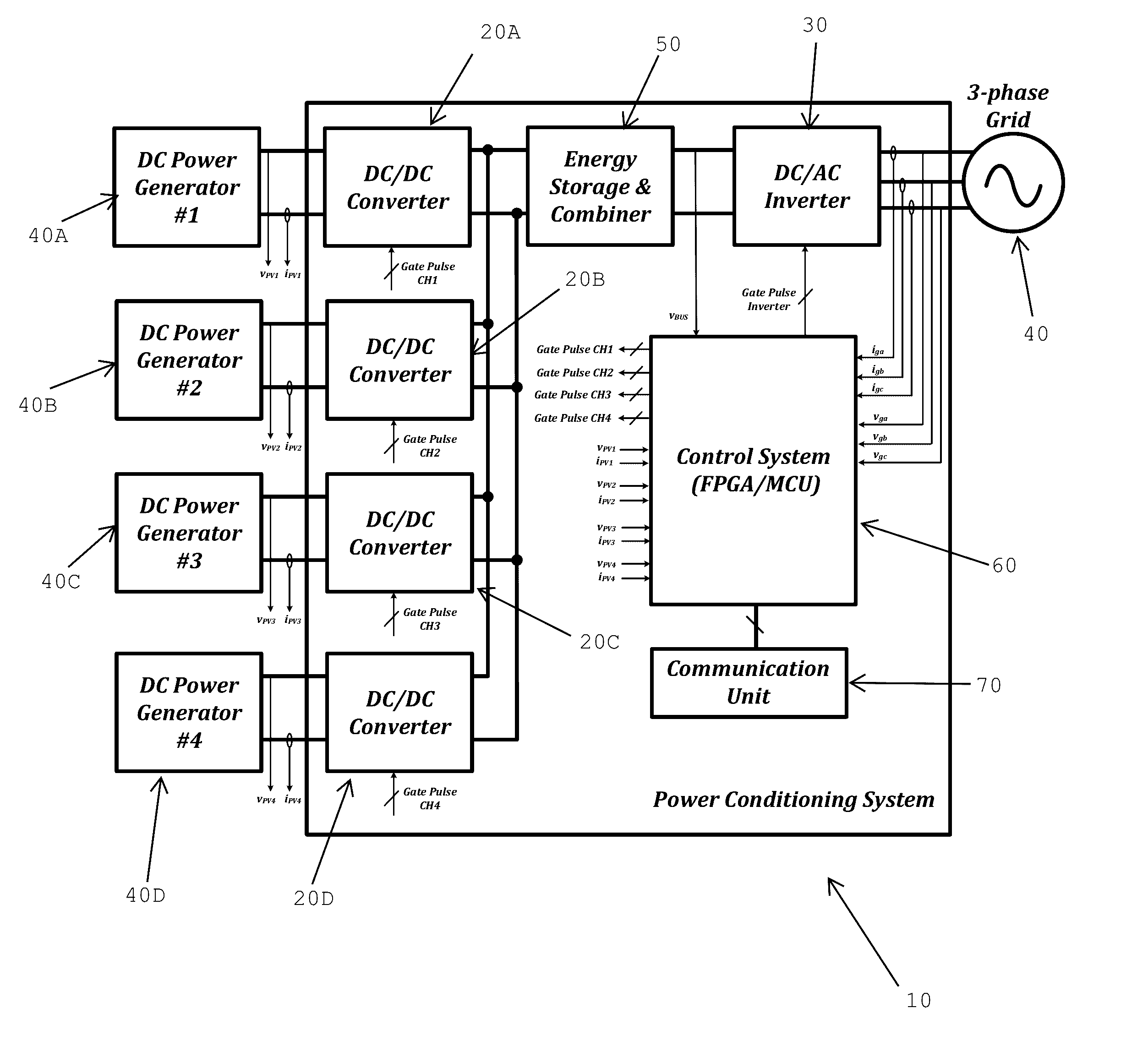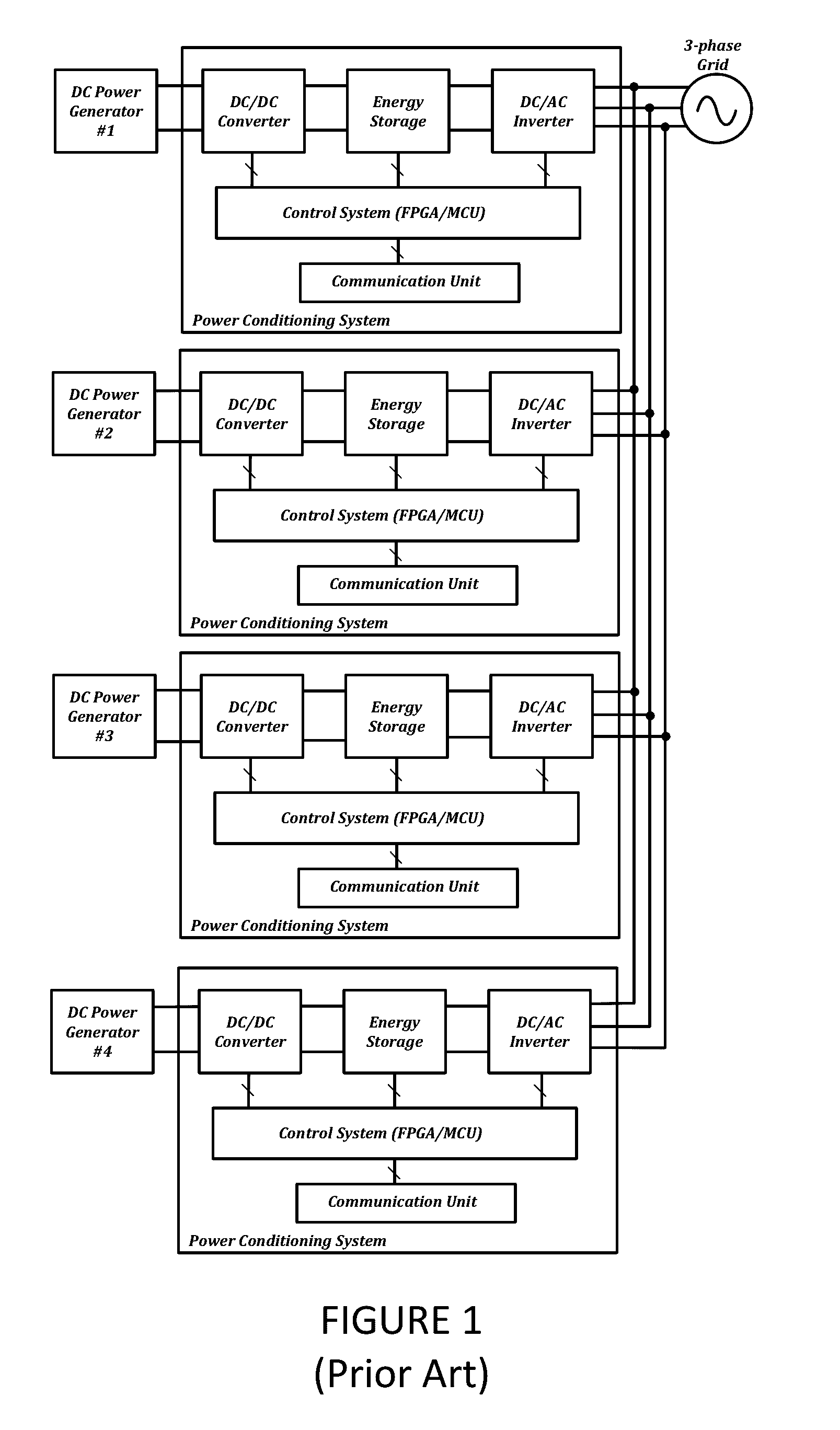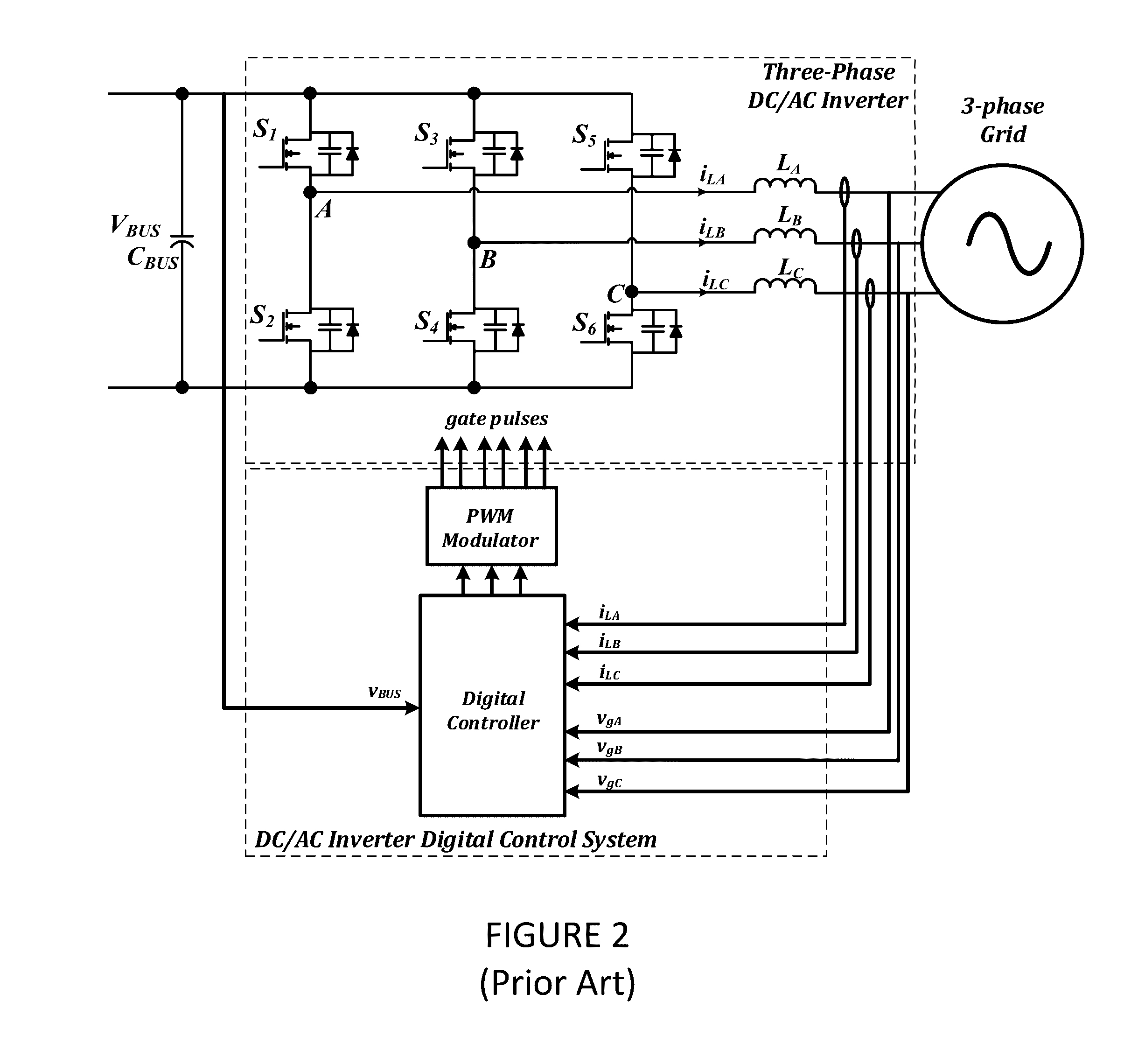Multiple input three-phase inverter with independent mppt and high efficiency
a three-phase inverter and three-phase technology, applied in the direction of wind energy generation, ac network load balancing, dc-ac conversion without reversal, etc., can solve the problems of large and heavy, complex configuration, and large installation and maintenance costs of such systems, and achieve the effect of reducing output rippl
- Summary
- Abstract
- Description
- Claims
- Application Information
AI Technical Summary
Benefits of technology
Problems solved by technology
Method used
Image
Examples
Embodiment Construction
[0047]Referring to FIG. 3, a block diagram of a system according to one aspect of the invention is illustrated. FIG. 3 illustrates a novel inverter topology for extracting power from one or more DC power sources and for delivering power to a three-phase power grid. The system 10 has four input stages (DC / DC converter 20A, 20B, 20C, 20D), and one output stage (DC / AC inverter 30). Each input stage receives DC power from a DC power generator or DC power source 40A, 40B, 40C, 40D. The output stage injects power into a three-phase AC power grid 40. The DC / AC inverter 30 receives an output of an energy storage and combiner block 50. This block 50, in turn, receives the output of all the input stages.
[0048]All the input stages, as well as the DC / AC inverter output stage 30 are controlled by a central digital controller 60. The energy storage and combiner block 50 stores and combines the outputs of the multiple DC / DC input stages before combining them for transfer to the DC / AC inverter outp...
PUM
 Login to View More
Login to View More Abstract
Description
Claims
Application Information
 Login to View More
Login to View More - R&D
- Intellectual Property
- Life Sciences
- Materials
- Tech Scout
- Unparalleled Data Quality
- Higher Quality Content
- 60% Fewer Hallucinations
Browse by: Latest US Patents, China's latest patents, Technical Efficacy Thesaurus, Application Domain, Technology Topic, Popular Technical Reports.
© 2025 PatSnap. All rights reserved.Legal|Privacy policy|Modern Slavery Act Transparency Statement|Sitemap|About US| Contact US: help@patsnap.com



